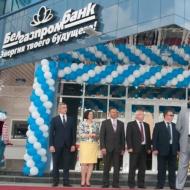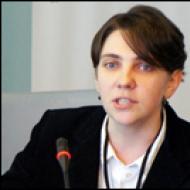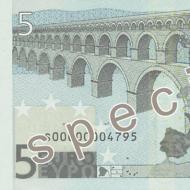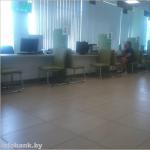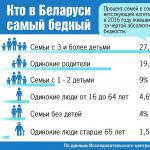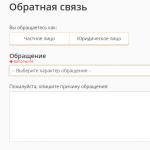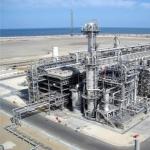
Forecast dollar rate for the year Belarus. What will happen to the ruble and the salaries of Belarusians, in what currency should the savings be kept? Expert forecast. What will happen to the purchasing power of Belarusians
Experts see no prerequisites for a serious devaluation of the Belarusian ruble.
In 2018, significant changes will take place in the country's foreign exchange market, however, the authorities do not forecast a significant adjustment in the exchange rate of the Belarusian ruble. In the 2018 budget, the Ministry of Finance has laid down an average annual rate of 2.0379 rubles per dollar. And what will actually be the exchange rate of the national currency in the coming year?
The foreign exchange market smells of liberalization
Significant changes in the foreign exchange market of Belarus are planned for this year. The Main Directions of Monetary Policy, which the President signed a few hours before the New Year, says that in 2018 “the actions of the National Bank will be aimed at canceling the mandatory sale of foreign exchange earnings and targeted purchases of foreign currency in the domestic foreign exchange market”.
This week, the National Bank has already published a decision to cancel the targeted purchase of foreign currency. Recall that for more than two decades, residents of Belarus (legal entities and individual entrepreneurs) had to use foreign currency purchased on the domestic market within seven working days only for the purpose for which it was purchased.
Moreover, the list of purposes for which foreign currency can be bought was limited in Belarus. In particular, enterprises were allowed to buy foreign currency in order to fulfill obligations to non-residents, but at the same time it was not allowed to purchase foreign currency for its deposit.
Also in Belarus in recent decades, another anachronism persisted - the obligatory sale of a part of foreign exchange earnings.
The use of these administrative instruments for regulating the foreign exchange market for many years was due to the fact that until 2015 high devaluation expectations remained in Belarus, and the refusal to purchase foreign currency could significantly increase the demand for it, and the abolition of the mandatory sale could reduce its supply.
The influence of both of these factors could weaken the exchange rate of the Belarusian ruble; therefore, for decades, the authorities held on to the administrative mechanisms for regulating the foreign exchange market.
Creditors of Belarus insist on their cancellation. By the way, in Russia, for example, there is no compulsory sale or targeted purchase of foreign currency.
The readiness of the National Bank to abandon the mandatory sale and targeted purchase of foreign currency in 2018 suggests that now there is no need for these crutches to maintain the exchange rate of the Belarusian ruble.
“Targeted purchase of foreign currency and its mandatory sale are the remnants of the old monetary policy, which was carried out until 2014, when the ruble exchange rate was determined administratively. Now we have a market regime of exchange rate formation, therefore, under these conditions, there is no need to preserve the mandatory sale of currency or control over its purchase, ”- Valery Polkhovsky, senior analyst of the Forex Club forex broker, noted in a comment for BelaPAN.
The National Bank emphasizes that foreign exchange liberalization will benefit businesses.
“The abolition of restrictions on the targeted purchase of foreign currency ... will provide greater freedom of entrepreneurial activity and will reduce the administrative costs of business entities associated with the need to apply to the National Bank for obtaining permits for the purchase of foreign currency for purposes not provided for by law, extending the storage period and changing targeted use of purchased foreign currency ", - said in a statement released this week by the regulator.
Is it possible not to be afraid of devaluation?
In the current conditions, as predicted by financial analysts, the ongoing liberalization of the foreign exchange market will not have a significant impact on the exchange rate of the ruble.
“The liberalization of the foreign exchange market will not affect the dynamics of the exchange rate of the Belarusian ruble, since the situation today is fundamentally different than in 2014, when high devaluation expectations were observed in the country,”- says Valery Polkhovsky.
At the same time, he notes that the cancellation of the targeted purchase and mandatory sale of foreign currency is evidence of the authorities' willingness to pursue a responsible monetary policy.
"The possibilities of using the emission of money to stimulate the economy will be almost completely excluded"- believes Valery Polkhovsky.
Taking into account the increased world oil prices, the expert predicts, the exchange rate of the Belarusian ruble in 2018 may be relatively stable.
“Against the background of relatively high oil prices, the exchange rate of the Russian ruble can stabilize around 55-60 rubles per dollar, so in 2018 there should be no large fluctuations in the foreign exchange market of Belarus. By the end of the year, the dollar exchange rate in our country may be approximately the same as now, ”- Valery Polkhovsky considers.
A similar opinion is shared by the Belarusian bankers, who do not expect big shocks with the ruble exchange rate this year. In private conversations, bank officials point out that their forecasts for this year do not imply significant exchange rate adjustments.
Vadim Iosub, senior analyst at the Alpari forex broker, also believes that there is no sign of a large devaluation.
“In recent years, the depreciation of the Belarusian ruble against the basket of foreign currencies was comparable to the change in consumer prices. Most likely, this correlation will continue this year. There are no prerequisites for the devaluation of the ruble by tens of percent ”,- says Vadim Iosub.
In his opinion, if the cross-rates of foreign currencies do not change significantly this year, then by the end of 2018 the rates will be approximately as follows: 2.15-2.20 rubles per dollar, 2.55-2.60 rubles per euro, and 3.70-3.75 Belarusian rubles per 100 Russian rubles.
“At the same time, the change in cross-rates of foreign currencies in the world market can significantly affect the actual results that we will receive by the end of the year,” - warns Vadim Iosub.
The expert draws attention to the fact that in 2017 the dollar exchange rate in Belarus practically did not change, and the euro rose in price by more than 15%.
“Most likely, external factors in 2018 will continue to have a decisive influence on the dynamics of the ruble exchange rate against foreign currencies,”- summed up the financial analyst.
In 2018, significant changes will take place in the country's foreign exchange market, however, the authorities do not forecast a significant adjustment in the exchange rate of the Belarusian ruble. In the 2018 budget, the Ministry of Finance has laid down an average annual rate of 2.0379 rubles per dollar. And what will actually be the exchange rate of the national currency in the coming year?
The foreign exchange market smells of liberalization
Significant changes in the foreign exchange market of Belarus are planned for this year. The Main Directions of Monetary Policy, which the President signed a few hours before the New Year, says that in 2018 “the actions of the National Bank will be aimed at canceling the mandatory sale of foreign exchange earnings and targeted purchases of foreign currency in the domestic foreign exchange market”.
This week, the National Bank has already published a decision on foreign exchange. Recall that for more than two decades, residents of Belarus (legal entities and individual entrepreneurs) had to use foreign currency purchased on the domestic market within seven working days only for the purpose for which it was purchased.
Moreover, the list of purposes for which foreign currency can be bought was limited in Belarus. In particular, enterprises were allowed to buy foreign currency in order to fulfill obligations to non-residents, but at the same time it was not allowed to purchase foreign currency for its deposit.
Also in Belarus in recent decades, another anachronism persisted - the obligatory sale of a part of foreign exchange earnings.
The use of these administrative instruments for regulating the foreign exchange market for many years was due to the fact that until 2015 high devaluation expectations remained in Belarus, and the refusal to purchase foreign currency could significantly increase the demand for it, and the abolition of the mandatory sale could reduce its supply.
The influence of both of these factors could weaken the exchange rate of the Belarusian ruble; therefore, for decades, the authorities held on to the administrative mechanisms for regulating the foreign exchange market.
Creditors of Belarus insist on their cancellation. By the way, in Russia, for example, there is no compulsory sale or targeted purchase of foreign currency.
The readiness of the National Bank to abandon the mandatory sale and targeted purchase of foreign currency in 2018 suggests that now there is no need for these crutches to maintain the exchange rate of the Belarusian ruble.
“Targeted purchase of foreign currency and its mandatory sale are remnants of the old monetary policy, which was carried out until 2014, when the ruble exchange rate was determined administratively. Now we have a market regime of exchange rate formation, so in these conditions, there is no need to maintain the mandatory sale of currency or control over its purchase., - noted in a comment for BelaPAN Senior Forex Broker Analyst Forex Club Valery Polkhovsky.
The National Bank emphasizes that foreign exchange liberalization will benefit businesses.
“Cancellation of restrictions on the targeted purchase of foreign currency ... will provide greater freedom of entrepreneurial activity and will reduce the administrative costs of business entities associated with the need to apply to the National Bank for obtaining permits for the purchase of foreign currency for purposes not provided for by law, extending the storage period and changing the intended use purchased foreign currency, ”the regulator said in a statement released this week.
Is it possible not to be afraid of devaluation?
In the current conditions, as predicted by financial analysts, the ongoing liberalization of the foreign exchange market will not have a significant impact on the exchange rate of the ruble.
“The liberalization of the foreign exchange market will not affect the dynamics of the exchange rate of the Belarusian ruble, since the situation today is fundamentally different than in 2014, when high devaluation expectations were observed in the country”, - says Valery Polkhovsky.
At the same time, he notes that the cancellation of the targeted purchase and mandatory sale of foreign currency is evidence of the authorities' willingness to pursue a responsible monetary policy.
"The possibilities of using the emission of money to stimulate the economy will be almost completely excluded", - believes Valery Polkhovsky.
Taking into account the increased world oil prices, the expert predicts, the exchange rate of the Belarusian ruble in 2018 may be relatively stable.
“Against the background of the relatively high exchange rate of the Russian ruble, it can stabilize in the region of 55-60 rubles per dollar, so in 2018 there should be no large fluctuations in the foreign exchange market of Belarus. By the end of the year, the dollar exchange rate in our country may be approximately the same as now, ”- Valery Polkhovsky considers.
A similar opinion is shared by the Belarusian bankers, who do not expect big shocks with the ruble exchange rate this year. In private conversations, bank officials point out that their forecasts for this year do not imply significant exchange rate adjustments.
Senior Analyst, Forex Broker "Alpari" Vadim Iosubalso believes that so far nothing bodes well for a large devaluation.
“In recent years, the depreciation of the Belarusian ruble against the basket of foreign currencies was comparable to the change in consumer prices. Most likely, this correlation will continue this year. There are no prerequisites for the devaluation of the ruble by tens of percent ", says Vadim Iosub.
In his opinion, if the cross-rates of foreign currencies do not change significantly this year, then by the end of 2018 the rates will be approximately as follows: 2.15-2.20 rubles per dollar, 2.55-2.60 rubles per euro, and 3.70-3.75 Belarusian rubles per 100 Russian rubles.
"At the same time, the change in cross-rates of foreign currencies in the world market can significantly affect the actual results that we will receive by the end of the year", - warns Vadim Iosub.
The expert draws attention to the fact that in 2017 the dollar exchange rate in Belarus practically did not change, and the euro rose in price by more than 15%.
"Most likely, external factors will continue in 2018 to have a decisive influence on the dynamics of the ruble exchange rate against foreign currencies.", - summed up the financial analyst.
Belarus has an impact on the forecast of the dollar exchange rate in 2018. Experts differ on this issue. We can say with confidence that the situation with the American currency in the country will be stable only for 3-4 months, but it is almost impossible to predict what will happen after 6 months.
Be that as it may, experts say that as of January 1, 2018, the value of the dollar in rubles will not exceed 70 units, but this factor directly depends on how the price of oil and other fuel products will change. As of today, you will pay as much as $ 55 / barrel. This price may persist for several months to come, experts say.
 French experts believe that the ruble will not fall and oil prices will not fall over the coming year, but the economy will undermine, and, accordingly, the value of the dollar currency will change, possibly due to the following circumstances:
French experts believe that the ruble will not fall and oil prices will not fall over the coming year, but the economy will undermine, and, accordingly, the value of the dollar currency will change, possibly due to the following circumstances:
- Construction of large architectural structures that will bring great opportunities to the country;
- The beginning of hostilities between especially large and leading states, as well as their conspiracy against other states;
- It is possible to change the current forecast in the event of some cataclysms (especially large floods, storms or earthquakes), which will incur a large number of victims and victims;
- The establishment of additional sanctions against the state, this will aggravate the situation, thereby causing a too sharp rise in prices within the state, and the impossibility of supplying personal products abroad.
However, one of the Parisian experts, Pierre Terzian, claims that over the next five years the situation in the country will hardly change and there is no need to worry much about the increase in the value of the dollar. Of course, the opinions of economic prophets can be trusted only when force majeure is not imminent.
Other influences on the dollar
Particularly accurate predictions and forecasts for the change in the value of the dollar against the Belarusian ruble are problematic. Not only the listed problems, but also foreign policy relations, such as the coming to power of Donald Trump, can strongly affect the state of the American currency. It is predicted that this event will significantly change the situation in each state, but whether the leaders of the leading countries can agree among themselves.
 It is equally important to prevent attacks by terrorists in every possible way, that is, to establish an obstacle to suicide bombers on the territory of the countries of Russia, Belarus and the United States. Such manipulations will reduce the mass of expenses, which will allow to raise the economies of states, and this will change the expensive value of the dollar. Investors are warned by experts that it is better to invest and store currency in dollars for a short-term period, because it is not known how the economic situation in the country will turn out. There is a high probability that next year, depositors may lose their savings.
It is equally important to prevent attacks by terrorists in every possible way, that is, to establish an obstacle to suicide bombers on the territory of the countries of Russia, Belarus and the United States. Such manipulations will reduce the mass of expenses, which will allow to raise the economies of states, and this will change the expensive value of the dollar. Investors are warned by experts that it is better to invest and store currency in dollars for a short-term period, because it is not known how the economic situation in the country will turn out. There is a high probability that next year, depositors may lose their savings.
Russian experts predict a calm year for the Russian ruble, although they do not exclude a collapse of its exchange rate in the event of force majeure circumstances, such as a drop in oil prices or a serious deterioration in relations between the Russian Federation and the United States.
In 2017, the Ministry of Finance of the Russian Federation began to regulate the exchange rate of the Russian ruble, starting to buy up surplus revenues from energy exports. Moreover, Russian Finance Minister Anton Siluanov said at the end of December that the new budget rule, as a result of which the purchase of foreign currency in 2018 will be optimized, will ensure the stability of the ruble exchange rate in the event of possible fluctuations in oil prices or changes in capital flow to the country.
Most Russian experts do not argue with this opinion, although many predict not stability, but a slight weakening of the ruble. For example, Sberbank CIB analysts believe that at the end of 2018, the dollar will rise to a level above 60 RUB / USD. They believe that this will result from the continued reduction of the key rate by the Bank of Russia and the corresponding decrease in the attractiveness of the Ministry of Finance's ruble bonds for foreign investors. Analysts of the British Lloyds Bank believe that the dollar will rise to 61 RUB / USD, guided by the same considerations.
At the same time, fluctuations in the ruble exchange rate are possible throughout the year. Igor Kogan, Deputy Chairman of the Board of Directors of Nordea Bank, believes that if new US sanctions are introduced against Russia, the dollar exchange rate may jump to 63 RUB / USD, by the middle of the year it will return to 59-60 RUB / USD, and at the end of 2018 it will rise again to 60- 61 RUB / USD. There are also more pessimistic forecasts, in particular, experts of the Uralsib bank believe that after the introduction of new US sanctions, the dollar exchange rate may rise to 70 RUB / USD. Probably the most pessimistic point of view on the ruble is held by VTB 25 analyst Alexey Mikheev, who expects the dollar to strengthen against the euro in the forex market, which should lead to a significant increase in the dollar against the ruble.
The President of the Russian Union of Industrialists and Entrepreneurs Alexander Shokhin believes that the dollar exchange rate may fluctuate in the range from 57 to 62 RUB / USD during the year, and by the end of the year it may reach 62 RUB / USD. The strengthening of the ruble, in his opinion, will be associated with the dynamics of oil prices.
Head of the Department of World Economy at the Higher School of Economics Leonid Grigoriev relies on the IMF forecast, according to which the dollar exchange rate at the end of the year may rise to 63-64 RUB / USD, and will depend on oil. If oil costs 55 USD per barrel, then the dollar rate will be 64 RUB / USD, and if 60 USD, then 55 RUB / USD.
It can be noted that this forecast does not take into account the actions of the Ministry of Finance, which is going to change the volume of foreign currency purchases depending on oil prices in order to exclude such fluctuations in the ruble exchange rate. Perhaps the IMF experts, while giving their forecast, did not yet know about the Finance Ministry's plans for 2018.
Be that as it may with the IMF, almost no one expects serious shocks in the Russian foreign exchange market in 2018.
Theoretically, it is possible for the ruble to have problems if the global financial crisis begins, but most experts do not expect it in 2018 either (see.
Yesterday we received the fifth tranche of a loan from the Eurasian Fund for Stabilization and Development in the amount of $ 200 million. This money, like the rest, should go to reforms of the Belarusian economy. How do they go in our country? Are there any changes and what to fear in the future? Today the Eurasian Development Bank, the fund manager, has summed up the interim results.
What should we do in return for a loan?
It is clear that loans to Belarus are issued for a reason. In return, reciprocal steps are always needed. The global task is to achieve stability and sustainable growth of the Belarusian economy. In particular, the EDB demanded a tight monetary policy, lack of directed lending, exchange rate flexibility, restrained growth in wage costs, the abolition of cross-subsidies, 100 percent utility bills, and so on.
In addition, in the latest requirements, the bank called the solution of issues with excessive employment, the provision of retraining opportunities, an increase in unemployment benefits, and a reduction in the public sector.
What results are there now?
Course stabilization
According to EDB estimates, the refinancing rate has dropped quite rapidly: over the past two years, it has dropped from 25% to 11%. This led to an increase in the money supply in the market. True, against this background, directed lending declined and a tight fiscal policy was pursued. In addition, favorable external factors also influenced Belarus: an improvement in the economic situation in Russia, an increase in demand for non-resource exports, an inflow of foreign currency due to significant external borrowings and net sales of foreign currency by the population - all this strengthened the balance of payments and stabilized the exchange rate.

Reducing inflation
- As of June 1, 2017, inflation was 6.1% year on year, compared to 12.4% as of June 1, 2016, - the bank informs. - It should be noted that such a success of the authorities in the fight against inflation was achieved against the background of the liberalization of prices for consumer goods. The share of regulated goods and services in the consumer price index basket decreased to 20% - against 33% since the start of the program. According to the EDB, the level of recoupment of utility services for the population has also increased. From 51.6% to estimated 62%.

- In September of this year, average inflation fell to 6.4% against the background of average inflation in 2010-2015 at the level of 28.4%, while inflation for 12 months decreased to 4.9%, - the bank concludes.
Shutting down the printing press
The annual growth of broad money as of June 1, 2016 amounted to 16.9%, and as of June 1, 2017 - 4.5%, compared to an average growth rate of 43% per year during 2010-2015.

Budget surplus
Over the past two years, we have seen an increase in capital expenditures, replenishment of the authorized capital of enterprises and an increase in credit support for the Social Protection Fund. The surplus increased due to the accelerated growth of budget revenues. Mainly due to the recovery of imports in the EAEU and an increase in excise rates, as well as a relatively restrained policy on current expenditures.

The authorities of the Republic of Belarus continued to adhere to a tight fiscal policy. At the end of January - May 2017, the broad budget surplus of government bodies, taking into account the off-balance sheet government spending, increased to 2.7% of GDP compared to 2.0% of GDP in January-May 2016.
Growth in non-energy exports
The weakening of the ruble by 7.5% in real terms in January - May 2017 (based on the producer price index) amid a flexible exchange rate policy and a slight increase in economic activity in Russia contributed to an increase in Belarusian non-energy exports - the main driver of the country's economic recovery. In January-May, GDP growth amounted to 0.9%.

Continued export growth, as well as the emerging recovery in domestic demand, accelerated economic growth to 1.7% in 9 months of 2017.
But what is the threat?
- Despite the significant improvement in the macroeconomic situation, the rapid pace of easing of monetary policy carries serious risks of accelerating inflation, which may appear as early as 2018, - explains the EDB. - The rapid and significant reduction in the refinancing rate in January - October 2017 from 18% to 11% resulted in the acceleration of broad money growth in the second half of 2017. In addition, the decrease in inflation rates was achieved against the background of a stable exchange rate of the national currency, which was supported by the country's external borrowings and net sales of foreign currency by the population.

The bank also warns that Belarus has almost reached the threshold for external debt. Meanwhile, the net sale by the population of foreign exchange accumulated in the past years outside banks cannot be a stable source of replenishment of reserves.
- These factors supporting the balance of payments and stabilization of the exchange rate cannot be called sustainable, - considers the EDB. - Structural problems, including over-employment in state-owned enterprises and the persistence of inefficient enterprise problems, limit the potential for monetary policy to further reduce inflation. And the restoration of real incomes of the population and the easing of monetary policy in the context of persisting high inflationary expectations increase the risks of accelerating inflation in the short term.

- Insufficient progress in the implementation of market structural reforms increases the risks of a deterioration in the country's external position in the medium term. In the current year, there is a significant excess of the growth rates of physical volumes of imports over exports, - concluded with the EDB. According to them, fundamental imbalances in the economy still persist in Belarus. This is evidenced by a steady decline in the inflow of foreign direct investment and an increase in the share of borrowings in financing the current account deficit. All this is happening against the backdrop of low economic growth and high cost of external borrowing.



